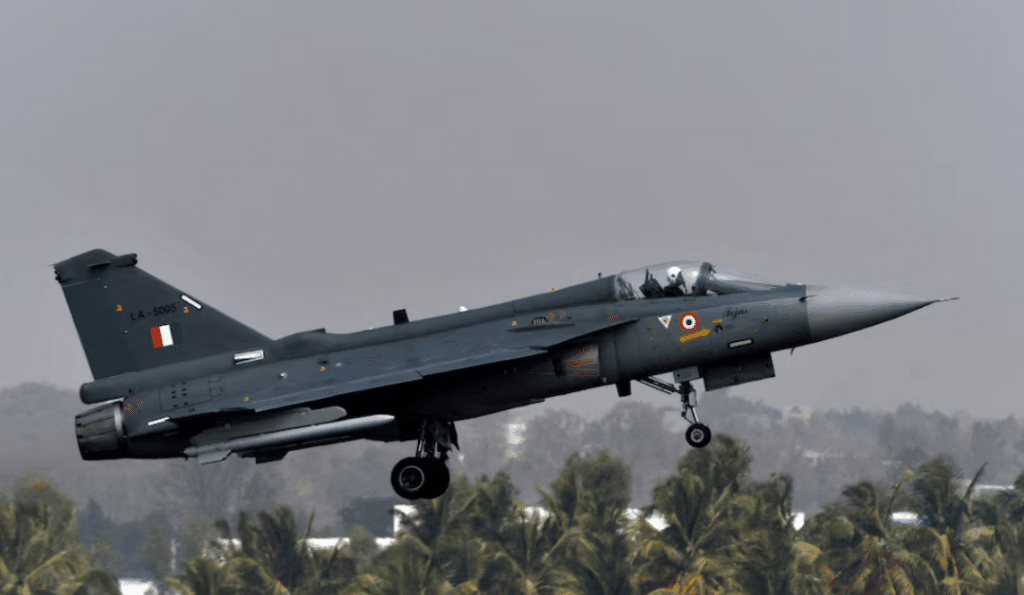In a significant policy shift, an empowered committee under India’s Ministry of Defence has proposed integrating private sector firms into the production of military aircraft. The recommendation, if implemented, could revolutionize India’s defence manufacturing ecosystem by reducing reliance on state-owned enterprises and expediting fighter jet deliveries.
The move comes at a crucial time as the Indian Air Force (IAF) grapples with a shortfall in combat aircraft, leaving gaps in its operational readiness. The government’s push for self-reliance in defence manufacturing, under the “Make in India” initiative, aligns well with this recommendation, fostering indigenous production capabilities while involving private players to ramp up output.
Challenges: The IAF’s Fighter Jet Shortage
The Indian Air Force currently operates 31 fighter squadrons, significantly below the sanctioned strength of 42, which is considered essential for effectively handling potential threats from both Pakistan and China.
A major reason for this shortfall is the slow production rate of new aircraft and the gradual phasing out of aging Soviet-era jets. The situation has become more urgent due to rising geopolitical tensions and the need to maintain aerial superiority.
Currently, Hindustan Aeronautics Limited (HAL), a state-owned company, is the primary manufacturer of fighter aircraft in India. However, production delays and supply chain constraints have led to an insufficient number of new aircraft entering service. This has created an operational void, making it imperative to accelerate production through private sector participation.
Defence Panel’s Key Recommendations
The high-level defence committee, headed by the defence ministry’s top bureaucrat, submitted its recommendations to Defence Minister Rajnath Singh. Following the report, the minister has directed that urgent steps be taken to implement the panel’s suggestions.
Some of the key recommendations include:
✅ Private Sector Involvement – Engaging private Indian defence firms to collaborate in the manufacturing of fighter jets. This will reduce dependence on HAL, increase competition, and ensure faster production rates.
✅ Boosting Production Speed – Increasing the production rate of fighter jets to induct 35-40 aircraft annually, which will help fill the gap in IAF’s squadron strength and replace obsolete aircraft quickly.
✅ Reducing HAL’s Monopoly – Diversifying aircraft production beyond HAL, which currently faces challenges such as supply chain issues, limited capacity, and delays in meeting delivery deadlines.
Air Chief Marshal’s Perspective on Private Sector Participation
Air Chief Marshal AP Singh has strongly advocated for the private sector’s role in India’s defence aerospace manufacturing. He has highlighted how a collaborative approach with private firms could significantly enhance the Air Force’s ability to modernize and maintain its fleet.
With India moving towards becoming a global defence exporter and reducing reliance on foreign military imports, the engagement of private companies in fighter jet production could be a game-changer for both national security and the domestic defence industry.
HAL’s Current Production Challenges
Despite its extensive experience, HAL has struggled to meet the IAF’s growing demand for new aircraft. The company aims to deliver up to 24 fighter jets equipped with General Electric engines in the upcoming fiscal year. However, production delays in the current fiscal year have been attributed to supply chain disruptions, particularly in engine deliveries from GE.
With the inclusion of private players, production bottlenecks could be addressed more efficiently, reducing India’s dependency on foreign suppliers and accelerating aircraft deliveries.
Implications for India’s Defence Industry and Strategic Readiness
Integrating the private sector into military aircraft manufacturing represents a major shift in India’s defence policy. It aligns with the broader goal of self-reliance in defence technology and aims to enhance production capabilities, ensuring that the IAF remains well-equipped to counter any potential security threats.
This initiative could also open new opportunities for private companies in India’s growing defence sector, fostering innovation, creating high-skilled jobs, and strengthening India’s position as a key player in global military aviation manufacturing.
With an urgent need to modernize its fleet and maintain air superiority, India’s decision to involve private firms in fighter jet production could be a transformative step towards achieving both military and industrial self-reliance.

